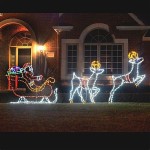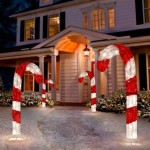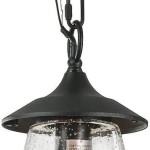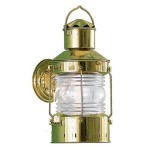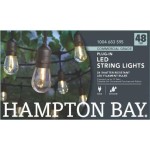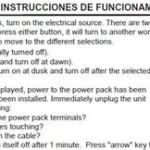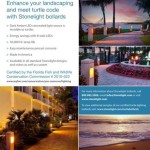How to Light Up Outdoor Trees: A Comprehensive Guide
Outdoor tree lighting enhances the beauty of landscapes, adds security, and provides ambient light for evening enjoyment. Careful planning and execution are crucial to achieve the desired aesthetic effect while ensuring safety and minimizing potential harm to the trees. This article details the fundamental aspects of illuminating outdoor trees, covering various techniques, equipment considerations, and best practices for installation and maintenance.
Planning and Design Considerations
Before installing any lights, a well-defined plan is essential. This plan should consider the type of trees, their size, location, and the overall visual effect desired. Different lighting techniques are suitable for different tree types and landscaping styles. A large, mature oak tree will require a different approach than a small ornamental Japanese maple.
Begin by assessing the landscape. Identify the trees that will serve as focal points. Consider the existing structures, pathways, and other landscape features. Determine the desired mood and atmosphere. Do you want to create a dramatic, theatrical effect, or a subtle, ambient glow? The answers to these questions will influence the choice of lighting fixtures, their placement, and the intensity of the light.
Consider the surrounding environment. Are there neighboring properties that might be affected by the lights? Excessive light pollution can be a nuisance. Choose fixtures with appropriate shielding and beam angles to minimize light trespass and direct the light only where it is needed. Dark Sky compliant fixtures are designed to reduce light pollution.
Sketching a simple lighting plan can be helpful. This plan should show the location of each tree, the proposed placement of the lights, and the direction of the light beams. This visual aid will facilitate the installation process and help ensure that the final result matches the initial vision.
Safety is paramount. Ensure that all electrical work complies with local building codes and regulations. Use weatherproof fixtures and wiring suitable for outdoor use. Consider the potential for water damage and electrical hazards. If unsure about any aspect of the installation, consult a qualified electrician.
Types of Outdoor Tree Lighting Techniques
Several lighting techniques can be employed to illuminate outdoor trees, each producing a distinct visual effect. The choice of technique depends on the tree’s characteristics, the desired aesthetic, and the surrounding landscape.
Uplighting: This is one of the most common techniques. Uplighting involves placing lights at the base of the tree and directing the light upwards towards the canopy. This highlights the tree’s form and creates a sense of drama. Uplighting is particularly effective for large, mature trees with interesting branch structures.
Downlighting: Downlighting involves mounting lights in the tree canopy and directing the light downwards. This technique simulates natural moonlight and creates a soft, ambient glow. Downlighting is often used to illuminate pathways or seating areas beneath the tree. Care must be taken to conceal the fixtures within the foliage to avoid a harsh, artificial appearance.
Silhouetting: Silhouetting involves placing lights behind the tree and projecting its outline against a wall or fence. This technique creates a dramatic and mysterious effect. Silhouetting works best with trees that have distinctive shapes and foliage patterns.
Moonlighting: Moonlighting is a variation of downlighting that aims to replicate the soft, diffused light of the moon. This technique typically involves using low-wattage fixtures with a blueish tint. Moonlighting is often used to create a romantic and tranquil atmosphere.
Path Lighting: While not directly illuminating the tree itself, path lighting can complement tree lighting by creating a cohesive and visually appealing landscape. Path lights are typically placed along walkways and driveways, providing illumination for safety and navigation.
String Lights: String lights, also known as fairy lights or bistro lights, offer a festive and whimsical touch. They can be draped across branches or wrapped around the trunk of a tree. String lights are available in a variety of colors and styles, allowing for creative customization.
Spotlighting: Spotlighting involves using focused beams of light to highlight specific features of the tree, such as a unique branch or a cluster of flowers. This technique can be used to draw attention to particular details and create visual interest.
When choosing a technique, consider the tree's species and shape. Deciduous trees, which lose their leaves in the fall, will have a different appearance in the winter compared to evergreen trees. Evergreen trees provide year-round foliage, allowing for consistent lighting effects.
Equipment and Installation Considerations
Selecting the right equipment is crucial for achieving optimal lighting results and ensuring safety. Choose fixtures that are specifically designed for outdoor use and are rated for exposure to the elements. Consider the type of bulb, the beam angle, and the fixture’s durability.
Lighting Fixtures: A variety of outdoor lighting fixtures are available, each with its own advantages and disadvantages. LED fixtures are generally the most energy-efficient and have a long lifespan. Halogen fixtures provide a brighter, whiter light, but they consume more energy and have a shorter lifespan. Incandescent fixtures are the least energy-efficient and have the shortest lifespan, but they are also the least expensive.
Bulbs: The choice of bulb will affect the color and intensity of the light. Warm white bulbs produce a soft, yellowish light that is often preferred for creating a cozy and inviting atmosphere. Cool white bulbs produce a brighter, more bluish light that is often used for security lighting. Color-changing bulbs allow for creating dynamic and festive lighting effects.
Wiring and Cables: Use weatherproof wiring and cables that are rated for outdoor use. Bury the cables underground to protect them from damage. Use conduit to protect the cables in areas where they are exposed to foot traffic or vehicular traffic. Ensure all connections are properly sealed to prevent water damage.
Transformers: Low-voltage lighting systems require a transformer to convert standard household voltage (120 volts) to a lower voltage (typically 12 or 24 volts). Choose a transformer with sufficient capacity to power all of the lights in the system. Place the transformer in a weatherproof enclosure.
Timers and Controls: Timers and controls can be used to automate the lighting system and save energy. Timers can be set to turn the lights on and off at specific times. Photocells can be used to turn the lights on automatically at dusk and off at dawn.
Installation: Proper installation is crucial for safety and performance. Follow the manufacturer’s instructions carefully. Use appropriate mounting hardware to secure the fixtures in place. Ensure that all connections are properly sealed to prevent water damage. Avoid damaging the tree’s bark or roots during the installation process. Loosely secure lights on tree limbs so that they may grow naturally without being constricted.
Consider hiring a professional landscape lighting contractor for complex installations. A professional contractor will have the expertise and equipment necessary to ensure a safe and effective installation.
Maintenance and Tree Health
Regular maintenance is essential to keep the lighting system operating properly and to protect the health of the trees. Inspect the fixtures and wiring regularly. Replace any damaged or worn components. Clean the lenses of the fixtures to remove dirt and debris.
Tree Growth: As the trees grow, the lighting fixtures may need to be adjusted to maintain the desired effect. Branches may need to be pruned to prevent them from blocking the light. Wires should be checked to ensure they are not constricting the tree's growth. Tree cabling systems can be integrated, if required, by a certified arborist.
Pest Control: Inspect the trees for signs of pests or diseases. Take appropriate measures to control any infestations. Avoid using pesticides that could damage the lighting fixtures.
Winterization: In cold climates, take steps to protect the lighting system from winter weather. Disconnect the power supply and store the transformer in a dry place. Remove any snow or ice that has accumulated on the fixtures.
Regular Inspection: Schedule regular inspections of the lighting system, preferably at least twice a year. This will allow you to identify and address any potential problems before they become serious.
Proper maintenance ensures that the outdoor tree lighting system will continue to enhance the beauty of the landscape for years to come.

Led Willow Trees Ilight Part 2 White Lights Light Up Tree

Outdoor Tree Lighting Arc Illuminations Projects

How Many Lights For Wrapping Trees

Diy Outdoor Ornaments Miss Information Lights

Outdoor Yard Decorating Ideas

Outdoor Cer Light Artificial Tree Balsam Hill

Giant 12 Led Cherry Tree Outdoor Lighting Fairy Lights In Trees

17 Outdoor Lights For A Beautiful And Bright Display
Very Home 8ft Multicoloured Waterfall Light Up Led Tree Co

Outdoor Navidad Giant Magic Led Light Up Tree With Smart Lights China Strip Made In Com
Related Posts
